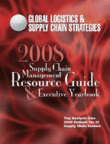
Visit Our Sponsors |
|
|
|
|
|
|
|
|
|
|
|
|
|
|
|
|
|
|
|
|
|
|
|
|
|
|
|
|
|
|
|
|
|
|
|
|
|
|

Analyst Insight
The number one strategy for reducing supply chain risk by high-tech companies is to increase supply chain flexibility-which allows companies to balance risk and opportunity. In terms of process maturity, high-tech companies are ahead of the curve of other industry segments and appear to be the most agile with sophisticated risk management techniques.
-Nari Viswanathan, research director at AberdeenGroup
Aberdeen research finds that companies in the high-tech and electronics sector are most advanced in terms of managing a multi-enterprise supply chain. In a recent survey of over 455 companies, 17 percent of the companies were from the high-tech industry. This sector was the most mature in terms of the business processes required for managing multi-enterprise supply chains as compared with other industries.
Some of the salient points associated with the high-tech supply chains are:
• Centralization of supply chain organizations. Best-in-class companies are evolving from multinational to global companies through centralization of their supply chain organizations and bringing procurement and order fulfillment into the fold with the supply chain planning organizations.
• Response management. The greatest financial value comes from leveraging visibility information to identify and eliminate root causes of delays or other production issues and to rapidly respond to changes that could negatively impact the business if mismanaged or left unattended. Effective supply chain response management reduces lead times and variability, enables lower inventory investment, improves customer satisfaction and revenue attainment, and cuts supply chain costs.
• Sales and operations planning. High-tech companies are continuing to lead the way in the S&OP process. Some of the areas where these companies are gaining traction include sales CRM system to supply chain system integration through sales forecasting and order promising, attach rate forecasting for complex configured products, and incorporation of pricing and inventory as decision factors within the S&OP process.
The Outlook
In 2008, expect to see green supply chain initiatives where companies are committing to design, source, manufacture and end-of-life all of their products in an environmentally and socially responsible manner. Other initiatives include developing green packaging and re-furbishing products to avoid waste going into landfills. The visionary companies are adopting a supplier ring strategy for optimizing the supply base for maximum flexibility, responsiveness and lowest total cost.
RELATED CONTENT
RELATED VIDEOS
Timely, incisive articles delivered directly to your inbox.

